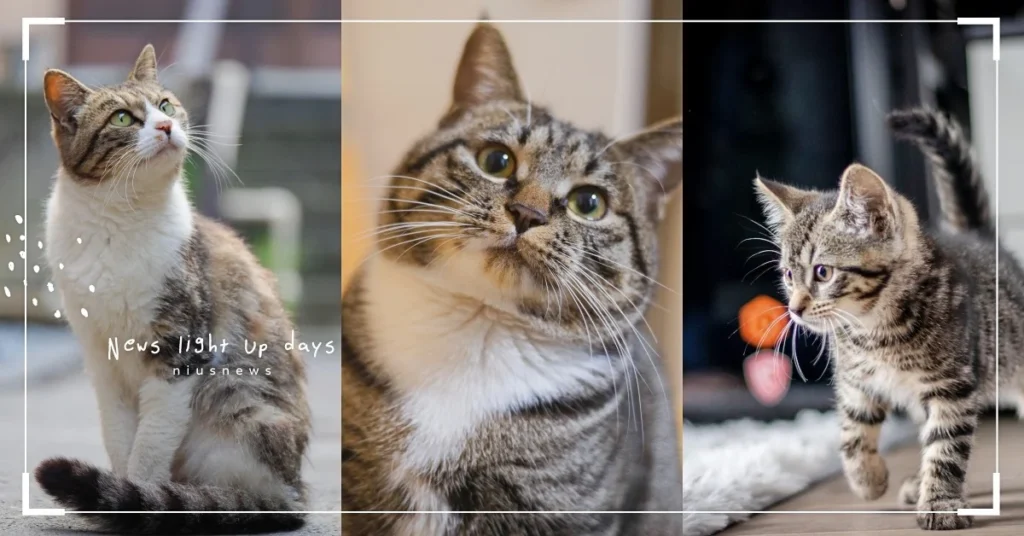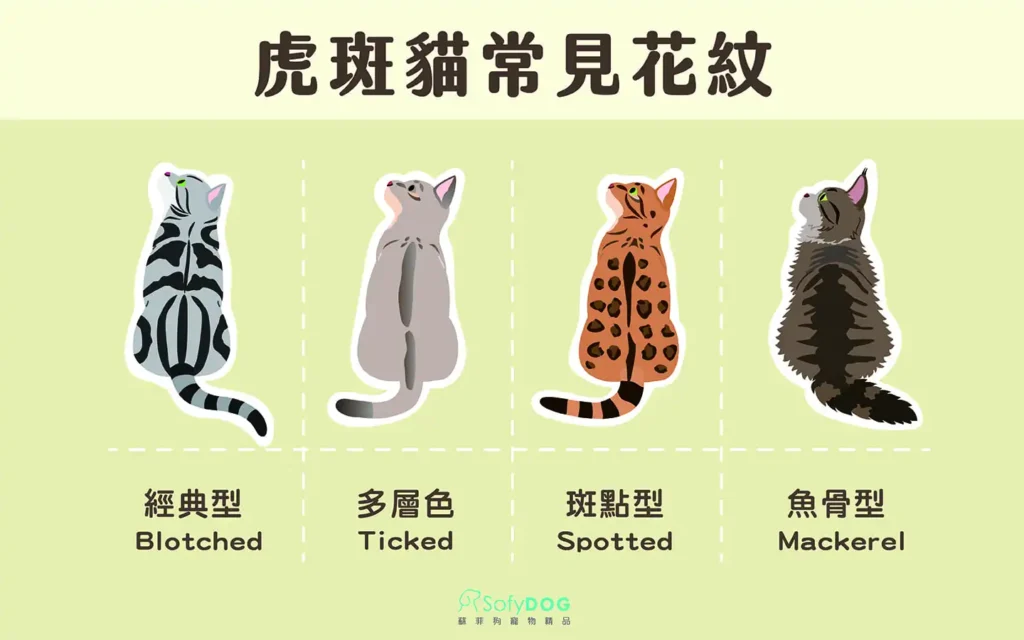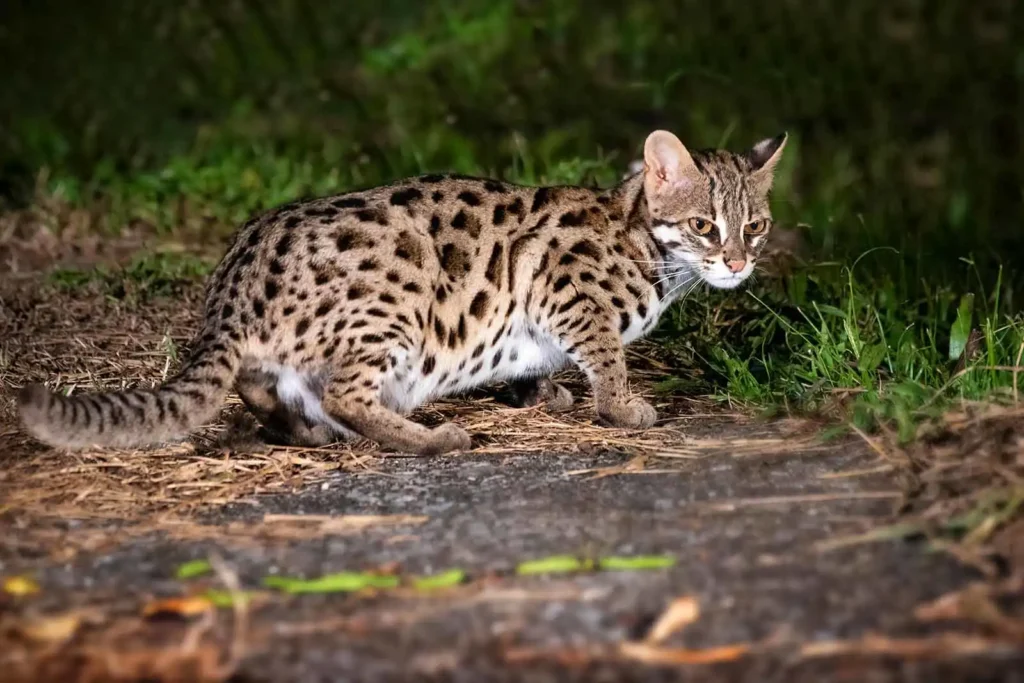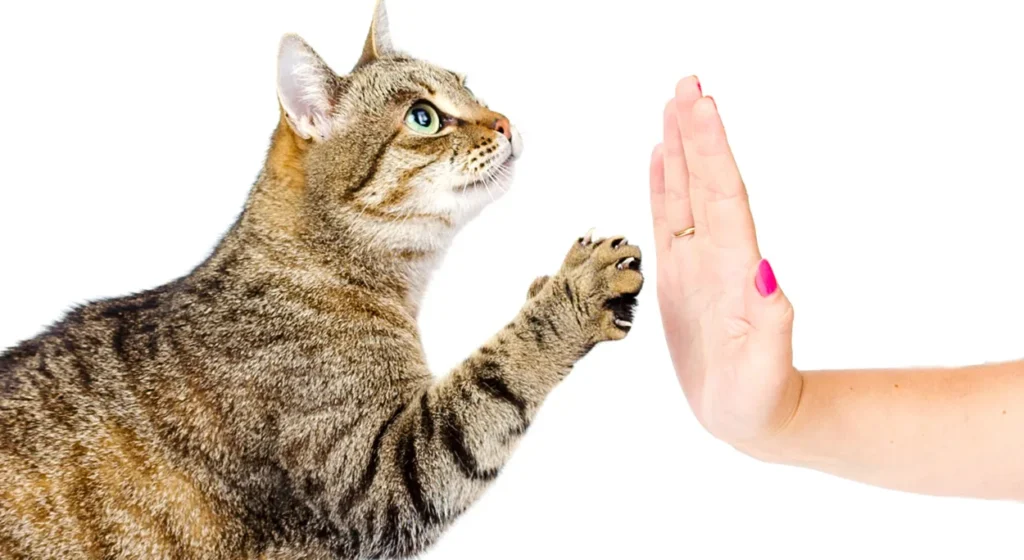Are you also attracted by the cute yet wild and charming appearance of tabby cats? What everyone notices most is probably the M mark on the forehead of a tabby cat. Did you know there is a legend behind this! If you want to raise a tabby cat, remember that you must be mature enough to serve your master well (?) This article will help you learn a little more about tabby cats and make you fall in love with this little sultry tiger overlord!

💡The origin of tabby cats
Some people say that tabby cats can be traced back to ancient Egypt. At that time, cats were regarded as sacred animals, and the M mark on the forehead of tabby cats symbolized high status. However, research in recent years has shown that domestic cats with tabby-shaped fur appeared in western Turkey around the 14th century, and the cause of this change in fur was genetic variation.
💡Is tabby cat a breed?
Tabby cats are not actually a breed. Any cat with an M-shaped mark on its forehead can be called a tabby cat! The following are all tabby cat breeds
american shorthair cat
Abyssinian cat
egyptian cat
ocelot
Mix tabby cat
💡What are the patterns of tabby cats?
Classic Tabby:
This pattern is also called the “bull’s-eye pattern” because there is usually a large concentric circle pattern on both sides of the body. This pattern is most noticeable, especially on short-haired tabby cats.
Mackerel Tabby:
This is the most common tabby cat pattern, showing thin fishbone-like stripes that run from the spine down to the belly. This pattern makes tabby cats look very elegant.
Spotted Tabby:
This pattern is similar to the herringbone pattern, but the stripes are broken into small spots. This pattern is common among cats and adds to the wild temperament of tabby cats.
Ticked Tabby:
This pattern does not have obvious stripes or spots, but instead each hair has a different color, making the entire fur look like it is speckled with tiny particles.

💡Basic characteristics of tabby cats
M-shaped lines on forehead
dark eyeliner
There are spiral lines at the corners of the eyes and cheeks
Colors include brown, orange, black, white, gray
Tabby cat VS Taiwanese Leopard Cat
Some people may think that tabby cats and leopard cats look a bit similar, but one can be used as a domestic cat, and the other is an endangered protected wild animal. Let’s see how to tell the difference in appearance!

| Breed | Tabby Cat | Taiwan Leopard Cat |
| Origin | exotic species | Taiwan native species |
| head | M-shaped markings on forehead | There are white stripes on the eye sockets and forehead |
| ear | Pointed ears | round ears |
| Tail | Tail long and slender | tail short and fluffy |
| pattern | striped pattern | spotted pattern |
💡Tabby cat personality
Tabby cats are usually more independent, more vigilant, and often look arrogant. However, because of this, many cat slaves are even more submissive to tabby cat owners. Let’s take a look at how arrogant tabby cat is (? )

He’s a sultry king
Although the tabby cat seems to be very wary and seems to be difficult to approach and has a sense of distance, in fact, when you get familiar with it, or when it recognizes you as a qualified poop scraper, it will let down its guard and get close to you, and give you as much as you want. Luo!
He is a curious baby
Tabby cats like to explore everywhere. When they notice something they have never seen before, they will observe and confirm it for themselves, so they can quickly adapt to new environments.
He’s a glutton
In fact, this is related to its strong curiosity. It must get all kinds of novel and delicious food. Don’t doubt its determination to eat!
Smart and easy to train
Tabby cats have high IQs and can quickly learn simple commands. Some of them will also consider the facilities at home by themselves, such as opening drawers, stealing snack jars, etc. If you want to compete with them, you may not win!
💡How to take care of a tabby cat?

Taking care of tabby cats requires attention to many aspects, including dietary management, health examinations, exercise and training, etc. Here are some specific care recommendations:
🐱Diet management
Since tabby cats are very greedy, owners need to pay special attention to controlling their food intake. Here are some suggestions for dietary management:
Routine feeding: Daily feeding should be at a fixed time and amount to avoid allowing cats to eat at will. Use measuring cups or a digital scale to ensure accuracy with every feeding.
High-quality cat food: Make sure the food contains enough protein, vitamins and minerals and avoid too many carbohydrates and artificial additives.
Snack control: Snacks can be used as training rewards or occasional supplements, but do not overdose. You can feed freeze-dried meat slices or healthier cat snacks without added sugar.
🐱Regular health check-up
Tabby cats are considered a healthy cat breed, but they still need regular health checkups to prevent and early detect potential health problems:
Annual physical exam: Take your cat for a comprehensive physical exam at least once a year, including blood tests, urine tests, and fecal tests.
Vaccination: According to the recommendations of your veterinarian, get necessary vaccinations on time, such as rabies vaccine and feline distemper vaccine.
Dental care: Have a professional dental cleaning once a year and brush your cat’s teeth regularly at home to prevent tartar and gingivitis.
🐱Sports and training
Tabby cats are lively and active and need enough exercise to stay healthy and avoid obesity:
Diversified training: Provide a variety of toys and training tools, such as scratching posts, cat teasing sticks, etc., to keep cats interested and active.
Interactive games: Spend time every day playing interactive games with cats to simulate hunting behavior and enhance the cat’s physical fitness and intelligence.
Cat jumping platform: You can set up a cat jumping platform at home so that cats can climb up and down and exercise their muscles and joints.
🐱Prevention and management of common diseases
Tabby cats are generally healthier than other cat breeds, but there are still some common health issues to be aware of:
Muscle and joint diseases: Tabby cats are prone to hereditary diseases of muscles and joints. Regular massage and appropriate exercise can help maintain their joint health.
Heart disease: Monitor your heart health with regular heart exams. If abnormalities are found, treat them as soon as possible.
Maintain a healthy weight: Prevent obesity-related diseases, such as diabetes and heart disease, by controlling your diet and increasing your physical activity.
🐱Keep clean and hygienic
Regular Grooming: Groom your tabby cat daily to reduce hair ball problems and keep its coat healthy.
Cat litter cleaning: Keep the cat litter box clean, clean it every day, and change the cat litter every week to prevent bacterial growth.
Ear and Eye Care: Check and clean your cat’s ears and eyes regularly to prevent infection.
🐱mental health
Environmental enrichment: Provide a variety of environmental stimulation, such as curtains, hiding places and activity spaces of different heights, to satisfy cats’ curiosity and exploration needs.
Companionship and interaction: Spend time interacting with cats every day, give them enough care and companionship, and reduce loneliness.
💡Conclusion
Whether you are a novice cat owner or an experienced cat owner, understanding the characteristics and feeding needs of tabby cats is the key to ensuring a healthy and happy life for cats! With some patience and love, a tabby cat can become an indispensable and happy companion in your life!
